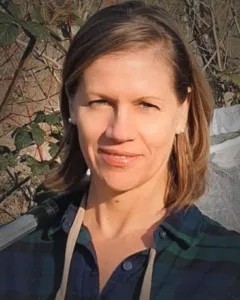
TOPIC: Earth-Kind Landscaping is a term coined by Dr. Steve George that uses research-proven techniques to provide maximum garden and landscape enjoyment while preserving and protecting the environment.
Regenerative Research and Teaching Earth-Kind Landscaping – Presentation handout (PDF 14 MB)
SPEAKER: Join Katerina Velasco Graham, the Dallas County Horticulture Extension Agent, to learn more about this nature based approach.
Katerina holds a B.S. in Animal Science from LSU, an M.Agr. in Wildlife Management with a
minor in Environmental Education from Texas A&M, and an M.S. in Horticulture with an
emphasis in Entomology from Oregon State University. In addition, she holds an 8-12 teaching
certificate in Biology and Spanish and an organic vegetable gardening certificate from Urban
Harvest in Houston.
As a stay-at-home mom in Houston, Katerina worked part-time in various positions: a laboratory
technician at an infertility clinic, a naturalist and Environmental Educator at two nature centers, a
soil yard customer service staff member, a contract instructor for gifted and talented ISD
programs, an Environmental Education Programs manager for The Woodlands Township, and a
Biology and Spanish teacher at a title 1 high school. She was also very active as a volunteer:
her efforts resulted in a nature trail for a charter school, two school gardens, a garden and
natural playground for a nature center, and an 80-bed donation community garden for The
Woodlands Township.
In 2020, after receiving her degree from OSU, Katerina worked full time for the USDA’s
Agricultural Research Service in Corvallis, Oregon as research assistant in the Lee Biocontrol
Lab. In 2022 she moved back to Texas to join Texas A&M’s AgriLife Extension Service as the Horticulture Agent for Dallas County.
Katerina grew up in Quito, Ecuador. She has two children, 28 and 24, and lives in Rowlett with
her husband Jeff and three cats: Minnu, Pookie and Lil’bit.
Monthly Meeting: August 21, 2023, at 6:30 with speaker beginning at 7pm.
As a reminder, anyone can attend. NPSOT membership is not required to join the monthly meetings.
Location: Gaston Christian Center’s Fellowship Hall
8515 Greenville Avenue, Dallas, TX 75243
(google map link: https://goo.gl/maps/f56RmuSnjn9Z6RQQ6)
If you can’t join in person, log on using this link: https://npsot-org.zoom.us/j/83725236133?pwd=QkhWN24zR2xlT3QrcnE5bEI5cndwUT09


